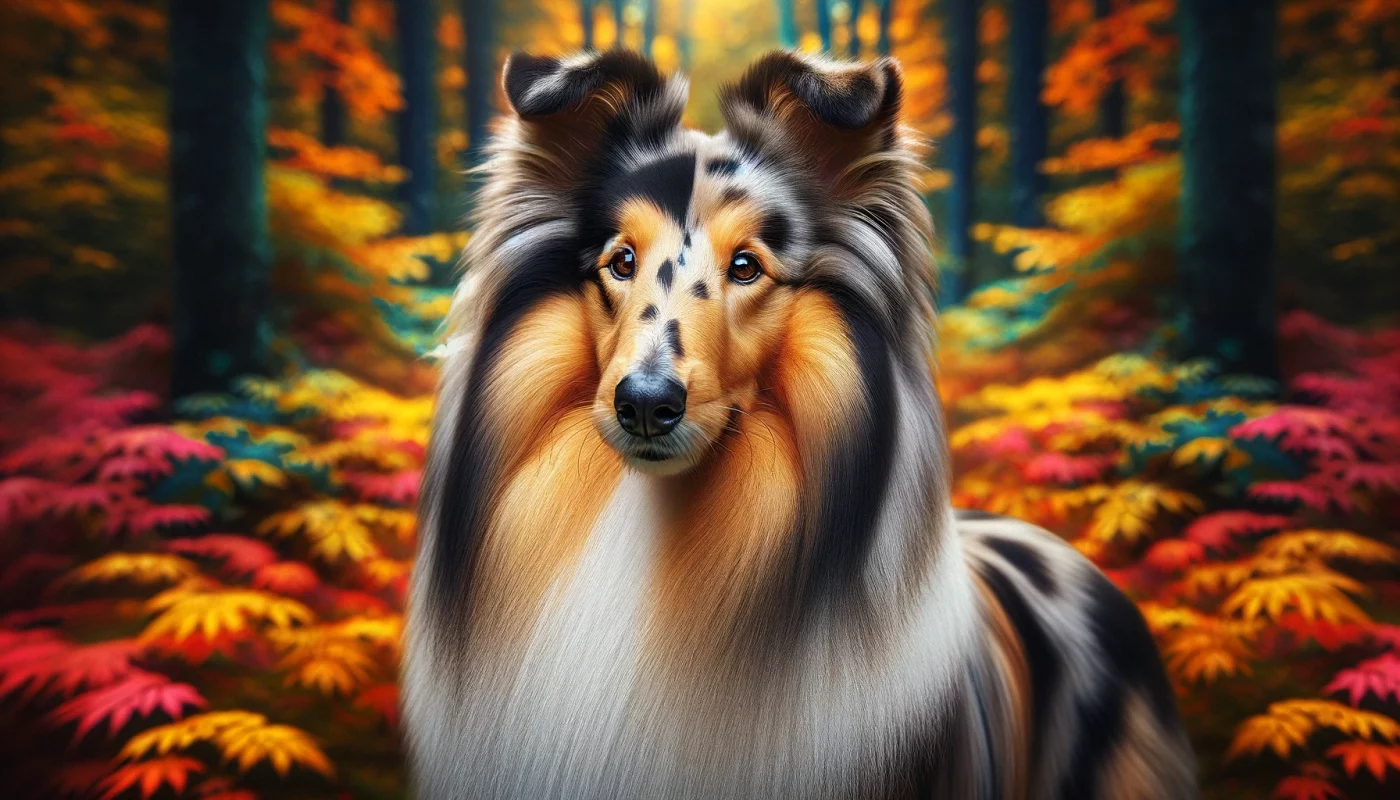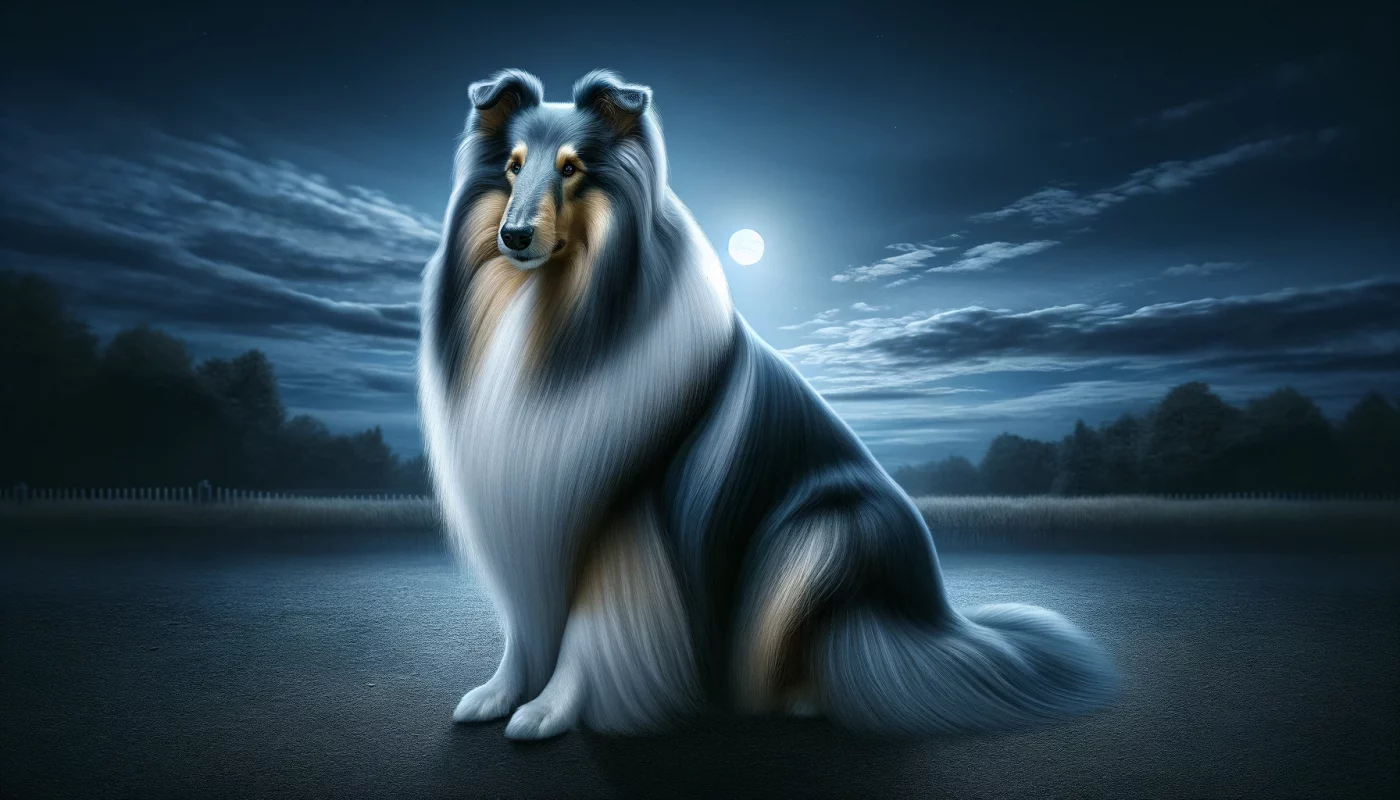Collies are renowned for their striking appearance and expressive eyes, making them one of the most beloved dog breeds. While often recognized for their role in film and television, their coats come in an array of beautiful colors and patterns that contribute significantly to their visual appeal and breed standards. From the classic sable and white to the striking blue merle, each color variation holds a special place in the Collie breed. This article explores seven stunning color variations of Collies, delving into the details of each to understand what makes them unique and captivating. Whether you’re a potential Collie owner or simply an admirer, these colors showcase the breed’s incredible diversity.
1. Sable & White
![]()
The Sable & White Collie is perhaps the most iconic color variation, epitomized by the famous “Lassie.” This color features a predominantly sable coat that ranges from light gold to deep mahogany, accented beautifully by white markings on the collar, chest, legs, and tail tip. Sable & White Collies often have a lush, full mane and tail, which highlight the rich color variations as they move. This variation’s popularity is due not only to its classic beauty but also its frequent portrayal in media, which solidifies its status as a quintessential Collie color.
2. Tricolor

Tricolor Collies are marked by their black, white, and tan coloring. The primary coat color is black, with white markings similar to those on the Sable & White, and rich tan markings usually appearing above the eyes, on the cheeks, and sometimes on the legs. The striking contrast between the black and white provides a bold, regal appearance, while the tan accents add a layer of depth and warmth to the overall look. Tricolor is highly valued for its dramatic effect and is a staple in Collie shows due to its sharp, clear definition.
3. Blue Merle

Blue Merle Collies are truly a sight to behold, with their patches of blue mixed with gray, black, and sometimes tan markings. Each Blue Merle Collie’s coat is unique, often resembling a marbled or mottled pattern that ensures no two are exactly alike. This variation is particularly eye-catching because of the striking blue hue that seems to shimmer in different lights. It’s a popular choice for those seeking a Collie with a distinctive and unusual appearance, though it requires careful breeding practices to maintain healthy genetics.
4. White

While less common, the White Collie is an exquisite variant. These Collies are predominantly white with only slight markings of sable, tricolor, or blue merle on their heads and sometimes their bodies. The white coat offers a blank canvas that highlights the expressive, almond-shaped eyes and elegant stature of the breed. White Collies are often sought after for their angelic appearance but require regular grooming to maintain the brilliance of their pristine coats.
5. Sable Merle

Sable Merle Collies features a sable base with merle patterning, which creates a diluted, marbled look over parts of the body. This can include a range of lighter patches that mix seamlessly with the darker sable base. Sable Merles are particularly fascinating because their appearances can vary widely, with some showing distinct patches and others having a more subtle expression of the merle gene. This color variant embodies a delicate balance between the traditional sable and the more dramatic merle, offering a softer alternative to the Blue Merle.
6. Double Merle

The Double Merle, or “lethal white,” is a result of breeding two merle-colored dogs together. It is characterized by a predominantly white coat with some patches of color. Double Merles often face a higher risk of health issues, including vision and hearing impairments. This color variant is controversial due to the potential for these health problems, and ethical breeders are cautious about breeding practices that could lead to Double Merle puppies. The awareness around this variation serves as an important reminder of the responsibilities breeders have in preserving the health and welfare of the breed.
7. Bi-Blue

Bi-Blue Collies are similar to Blue Merles but without tan markings, consisting only of blue, white, and black. This gives them a cooler, more uniform appearance that is both rare and beautiful. The lack of tan markings can make the blue and gray patterns even more prominent, leading to a spectacular display of color that is subtle yet striking. Bi-Blue is appreciated among Collie enthusiasts for its rarity and the unique aesthetic it brings to the breed.
In conclusion, Collies are not only versatile in function and personality but also in their array of stunning coat colors. Each color variation has its own set of characteristics that can appeal to different preferences and lifestyles. From the traditional beauty of the Sable & White to the rare and ethereal Bi-Blue, Collies offer a diverse palette that enhances their appeal and showcases their distinctive elegance. Whether in a family home or a show ring, these colors make the Collie a breed celebrated for both its appearance and its spirited charm.
Frequently Asked Questions About Collie Colors
1. What are the standard coat colors of Collies?
Collies come in four standard coat colors: Sable & White, Tricolor, Blue Merle, and White. Sable & White Collies have a predominantly sable (ranging from light gold to rich mahogany) coat with white markings. Tricolor Collies feature a primarily black coat with white areas and tan markings on the face and legs. Blue Merle Collies are particularly striking, displaying a mottled blend of blue, gray, and black, often with tan markings as well. White Collies, though less common, are mostly white with some sable, tricolor, or blue merle markings, usually on the head.
2. How do Collie colors affect their show ring potential?
In the show ring, Collies are judged according to the breed standard, which accepts all the main color variations: Sable & White, Tricolor, Blue Merle, and White. Each color is evaluated equally, provided it meets the breed’s specific criteria for quality and pattern. For instance, the clarity and distribution of the merle pattern in Blue Merles or the richness of the sable in Sable & Whites can impact judging. However, the dog’s overall conformation, movement, and temperament are more critical factors in its success in the show ring than coat color alone.
3. Can Collie colors change as they grow?
Yes, Collie puppies can experience changes in their coat colors as they mature. Sable puppies may darken or lighten as they age, with the sable shading deepening or expanding. Blue Merle Collies can see variations in the clarity and spread of their merle markings. Tricolors generally retain their black color, but the richness and placement of tan might adjust slightly. It’s also not uncommon for the amount of white to become more defined as the dog grows.
4. What genetic factors influence Collie’s colors?
Collie coat colors are influenced by a combination of genetic factors. The primary gene responsible for the sable color is dominant over other colors. The merle pattern, seen in Blue Merles, is due to a different gene that dilutes the base color, creating the mottled effect. Genetics also dictate the presence and distribution of white markings and the expression of tan points in tricolors. Breeders often use genetic testing to predict the potential colors of puppies and to avoid health issues related to certain color genes, such as the double merle gene.
5. Are there any health concerns associated with certain Collie colors?
Yes, there are specific health concerns associated with certain Collie colors, particularly with the Merle pattern. Dogs that inherit the merle gene from both parents (double merles) are at a higher risk for auditory and visual impairments, including deafness and blindness. This is why responsible breeding practices are essential to avoid producing double-merle puppies. Otherwise, color alone in Collies does not typically contribute to health problems.
6. What is the rarest Collie color?
The rarest Collie color is the White Collie, characterized by a predominantly white coat with only minimal patches of other colors, typically on the head. This color variation is less common because it results from a specific genetic combination that limits the pigmentation in the coat. While striking, the white coloration is perfectly acceptable within breed standards, though it is less frequently seen than the other major colorations.
7. Do Collies with lighter colors require more grooming?
While grooming requirements in Collies are generally consistent regardless of coat color, lighter-colored Collies, such as Whites and Blue Merles with extensive white, might need more frequent grooming to maintain the brightness of their coat. White fur can show dirt and stains more easily than darker colors, requiring more regular baths to keep the coat clean and vibrant. Regardless of color, all Collies benefit from regular grooming to manage shedding and prevent matting.
8. How do environmental factors affect Collie’s colors?
Environmental factors don’t generally affect the genetic expression of coat colors in Collies, but exposure to sunlight can sometimes lighten the coat, particularly in darker-colored Collies like sables and tricolors. Prolonged sun exposure can cause a bleaching effect, especially during the summer months or in sunny climates, subtly changing the intensity of the coat color. Adequate care and protection from excessive sun exposure can help maintain the original color vibrancy.
9. Can a Collie’s coat color predict its temperament?
No, Collie’s coat color does not influence its temperament. Collies are generally known for their friendly, intelligent, and responsive nature, traits that are consistent across all color variations. Temperament is influenced by genetics, upbringing, and training rather than coat color. Prospective Collie owners should focus on the dog’s health, temperament, and how well it has been socialized, rather than color, when selecting a pet.
Learn More About the Collie Dog Breed: Information, Facts & Pictures
10. Are certain Collie colors more popular than others?
While all Collie colors are appreciated among enthusiasts, the Sable & White coloration tends to be the most popular, largely because of its association with “Lassie,” the famous TV and movie star. This popularity is reflected in higher demand for Sable & White puppies in many regions. However, all Collie colors have their admirers, and variations like the striking Blue Merle are also highly sought after for their unique beauty.
 Toledo, United States.
Toledo, United States.